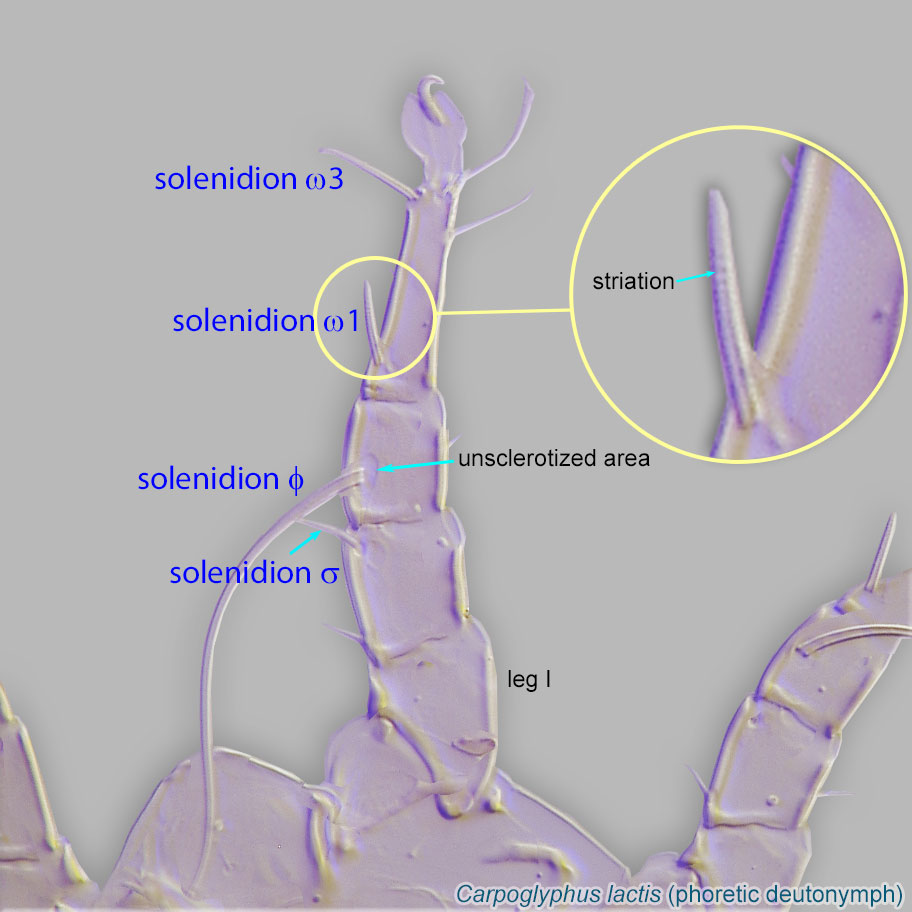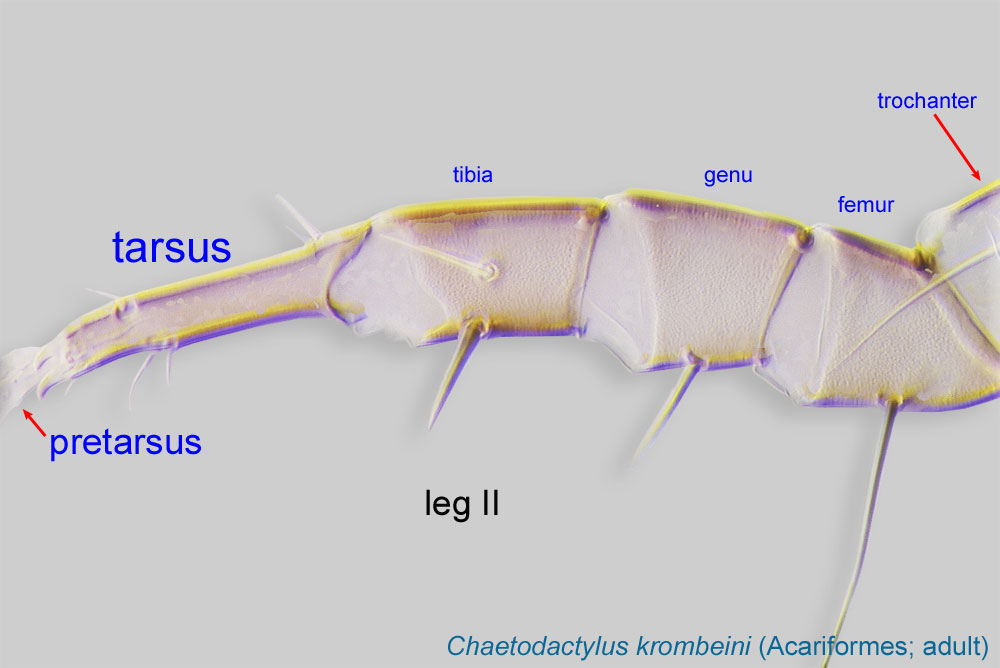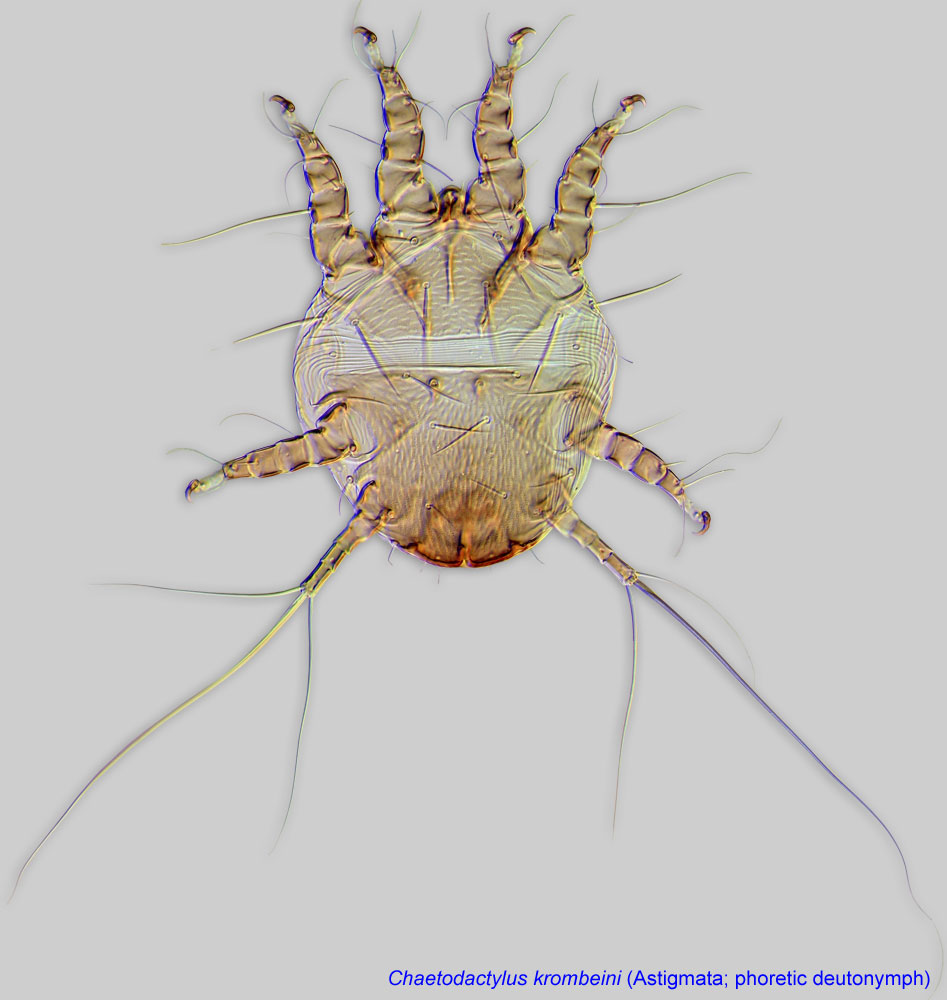lives in bee nests and disperses on bees, but feeding behavior not known
Diadasiopus OConnor, 1997OConnor, 1997:
OConnor, B. M. 1997. Two new mites (Acari: Acaridae) associated with long-tongued bees (Hymenoptera: Apidae) in North America. Journal of the Kansas Entomological Society . 69 : 15-34.
Superorder Acariformes » Order Sarcoptiformes » Suborder Oribatida » Infraorder Desmonomata » Hyporder Astigmata » Family Acaridae » Genus Diadasiopus
Diadasiopus eickworti OConnor, 1997OConnor, 1997:
OConnor, B. M. 1997. Two new mites (Acari: Acaridae) associated with long-tongued bees (Hymenoptera: Apidae) in North America. Journal of the Kansas Entomological Society . 69 : 15-34.
Phoretic phoretic:
Pertaining to phoresy; using another organism (i.e., a host) for dispersal to new habitats. Phoresy can be distinguished from parasitism because feeding typically does not occur during phoresy.
deutonymph: Dorsum with longitudinal striations (Fig. 1). Coxal setae 1a, 3a filiform and long (4a conoidal) (Figs. 2, 3). Setae e I-II and solenidionsolenidion:
Thin-walled, terminally rounded or pointed filiform or peglike structure that is not birefringent in polarized light (unlike common setae in Acariformes). Often appears striated because of its internal structure. Found on the palpal tarsus on the gnathosoma and may also occur on the tarsus and tibia, less frequently on the genu, and occasionally on the femur of legs I-IV. In Acariformes, leg solenidia often arise from unsclerotized areas.
 ω2 absent (Fig. 4). Tarsustarsus:
ω2 absent (Fig. 4). Tarsustarsus:
Terminal segment (also known as podomere or palpomere) of legs or palps. In Parasitoformes it can be subdivided into telotarsus and basitarsus.
 IV with 2 long setae (w and f) (Fig. 5).
IV with 2 long setae (w and f) (Fig. 5).
The two known species of Diadasiopus can be separated using OConnor and Daneshvar, 1999OConnor and Daneshvar, 1999:
OConnor, B. M. amp; G. Daneshvar. 1999. A new species of Diadasiopus (Acari: Acaridae) associated with Diadasia chiliensis (Hymenoptera: Apidae) in Chile. University of Kansas Museum of Natural History Special Publication.24: 207-210..
Nearctic and Neotropical regions
Diadasia; rarely Anthophora
permanentpermanent:
associated exclusively with bees or their close relative, wasps; cannot live without these hosts
 disperse on bee hosts.
disperse on bee hosts.